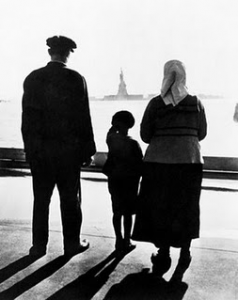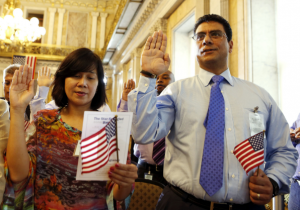The United States has seen the local Arab population almost double over the last few decades according to the Census Bureau. As more and more Arabs have emigrated to the U.S., it has become apparent that many have come to settle here by escaping the unrest in the Middle East.
 The bureau noted a considerable increase in the Arab population, with a total of 60% of the Arab population tracing their roots back to Lebanon, Syria, and Egypt. In earlier years many of the Arab immigrants arrived from countries which had large Christian populations. The more recent Arabs have come from nations which have high Muslim populations, including Yemen and Iraq.
The bureau noted a considerable increase in the Arab population, with a total of 60% of the Arab population tracing their roots back to Lebanon, Syria, and Egypt. In earlier years many of the Arab immigrants arrived from countries which had large Christian populations. The more recent Arabs have come from nations which have high Muslim populations, including Yemen and Iraq.
There are other reasons which drew them to settle in the U.S. where they could begin a new life. There are more economical and educational opportunities in the U.S. which make for a more promising future career.
Helen Samhan, the Executive Director of the Arab American Institute Foundation, mentioned how the lifting of U.S. immigration quotas during the 1960s allowed people from Arab countries to come to the U.S., many of whom took advantage of this opportunity throughout the 1980s and 1990s. It was during this period that Lebanon and Iraq were war torn areas, resulting in many of their nationals arriving in the U.S.
There are five states in the U.S. which are home to half of the entire Arab population in the country, namely California, New York, Michigan, New Jersey, and Florida.
The U.S. has the largest Arab population of any other non-Arab nations, and it is more suitable for Arabs to live here among one another. Zak Trad currently lives in Anaheim, California and arrived there in 2000. He says that it has such a large Arab community that he wasn’t concerned about feeling like a stranger when he moved there.
 The location of New York City has made it the first stop for immigrants, which has led to its inclining Arab population. Another highly populated Arab area is Dearborn, a suburb of Detroit, Michigan. It was here that many Arabs came to work in the automobile industry and built a large community there.
The location of New York City has made it the first stop for immigrants, which has led to its inclining Arab population. Another highly populated Arab area is Dearborn, a suburb of Detroit, Michigan. It was here that many Arabs came to work in the automobile industry and built a large community there.
Arab-Americans claim that their population is much larger than what it is reported to be by the Census Bureau. Many are reluctant to fill out government forms as they originate from countries with oppressive regimes.
The census report came to a halt in 2000, and no data is available to indicate the impact of the September 11 attacks on our Arab population. Tighter restrictions imposed on immigration have seen a slight decline of Arabs entering the U.S.
Immigrants are now more tightly screened which will reduce the volume of immigrants, and it is expected that Arab and Muslim immigrants will be scrutinized to a greater extent in the U.S. than in other countries.
Following the September 11 attacks, the backlash against Arab-Americans drew us even closer and led us to become more involved in the nation’s politics. Our political influence has boosted considerably in states such as Michigan, which have a large Arab population, and should continue to do so in the coming years.
